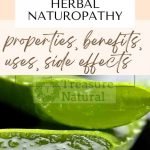
Glucomannan is a natural ingredient used above all to promote weight loss and intestinal transit.
The glucomannan is a polysaccharide extracted from ‘ Amorphophallus konjac , a plant of the family Araceae . It is a substance widely used to promote weight loss , but not only.
What is Glucomannan
Glucomannan is a polysaccharide made up of glucose and mannose molecules (two sugars) joined together. It is found in large quantities in the root of Amorphophallus konjak, a plant of the Araceae family known as konjac .
Properties of glucomannan
The glucomannan is a granular powder characterized by a high viscosity and can absorb a lot of water.
In the presence of liquids, in fact, glucomannan generates a gel and increases its volume about 60 times, compared to that of its dry form; then if the environment is acid it reaches its maximum expansion, up to 80-100 times.
Due to its ability to form stable gels, glucomannan has properties exploited in the food industry and for well-being.
What is glucomannan used for
Thanks to the properties of glucomannan, this substance is used in the food industry as a gelling agent and thickener.
Since there are also several benefits of glucomannan, this is also used in the formulation of food supplements recommended for weight loss, to promote intestinal transit and to regulate the absorption of cholesterol, triglycerides and glucose.
In the stomach, in fact, glucomannan swells, increasing the sense of satiety and, once it reaches the intestine, it helps to reduce the absorption of fats and slow down that of sugars, carrying out a cholesterol-lowering and hypoglycemic action.
The gel formed by glucomannan also exerts a laxative action as it increases the fecal mass by stimulating peristalsis.
Why does glucomannan make you lose weight?
Glucomannan contributes to weight loss since, by swelling, it produces a sense of fullness and satiety. After 15 minutes from taking, this substance begins to swell and, after about an hour, reaches its maximum value, thanks to the presence of acidic gastric juices. The anti-hunger action can last up to two hours, which is why glucomannan is often recommended for weight loss, especially when the diet is particularly restrictive or if it lasts a long time.
Clearly glucomannan makes you lose weight, or rather, contributes to weight loss, only if associated with a balanced diet and adequate physical exercise.
How to use glucomannan
The glucomananno powder can be taken as a dietary supplement. It is easily found in herbal medicine and pharmacy in the form of tablets to be taken with plenty of water before main meals.
What foods are glucomannan found in?
In addition to making supplements, glucomannan is also used to make dietary pasta.
The glucomannan flour is in fact used for preparing konjac pasta, characterized by a high satiating power and a low caloric intake.
Since it is a food additive, small amounts of glucomannan can also be found in packaged foods and beverages, breading batters, candies, salad dressings, soups, gravies, creams, ice cream and many other products.
Contraindications of glucomannan
Glucomannan can reduce the absorption of any medications and nutrients. Its use should therefore be evaluated by the doctor in case of ongoing drug therapies or nutritional deficiencies. The intake of glucomannan is then contraindicated in people suffering from gastrointestinal inflammatory diseases.
At high dosages undesirable effects may occur; among the side effects of glucomannan we find gastrointestinal disorders such as excessive feeling of fullness, diarrhea and bloating.
Description of the plant
The konjac is a perennial herbaceous plant that is part of the well-known family of Araceae, to which also belongs the calla. The amorphophallus genus consists of about 200 species, some of which are among the most spectacular flowering plants.
The plant develops from a tuber (root) which is shaped like a large apple and which can reach several kilos in weight. An inflorescence emerges from its center in spring , even more than a meter and a half high, which takes a few weeks to develop completely: on a stem with a diameter of 3-4 cm.
It engages one spadix of the same diameter, dotted at the base by a large number of tiny flowers , inconspicuous, and wrapped by a sort of leaf (spathe) which widens in the shape of a cone within a few days, color and texture resembling much to raw meat. The smell of this “flower”, which recalls the strong smell of rotting flesh, allows the plant to attract the insects that pollinate the small flowers.
Another undoubtedly interesting detail is that the inflorescence emerges from the tuber, without this being able to supply water and nutrients from the soil, because at this stage it is still devoid of roots. Once the flower has withered, from the same point, at the apex of the petiole more than a meter long and of a green mottled with brown color, a single jagged leaf will open which in the Anglo-Saxon world has given the plant the name of snake palm.
Habitat of glucomannan
Native to East Asia , it is extensively cultivated in Japan.
Background
The tubers of many Amorphophallus species are eaten in their countries of origin, but after careful cooking, because otherwise they are toxic. Glucomannan has been used in Asia for centuries in the preparation of traditional foods such as noodles and tofu.
It is currently used in vegetarian cooking and in thermostable gelled food products. Glucomannan, being a natural vegetable gum, is also called Konjac gum .
It is generally used in the food industry as a gelling agent, thickener, emulsifier, stabilizer and soluble source of fiber.






